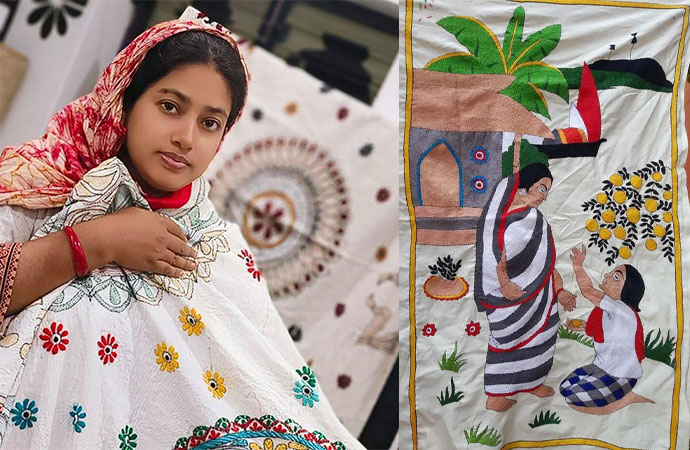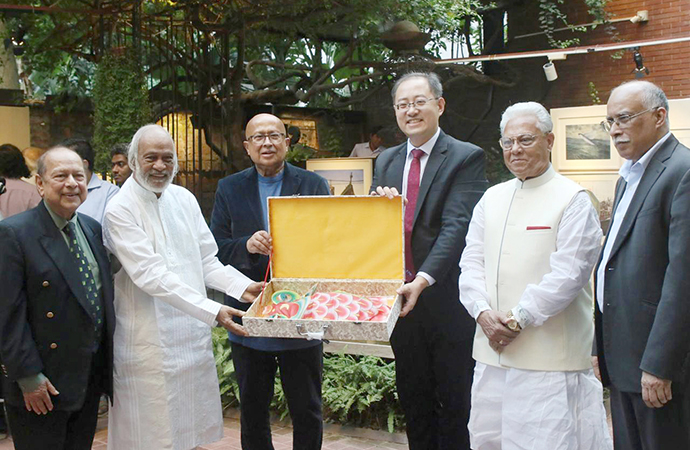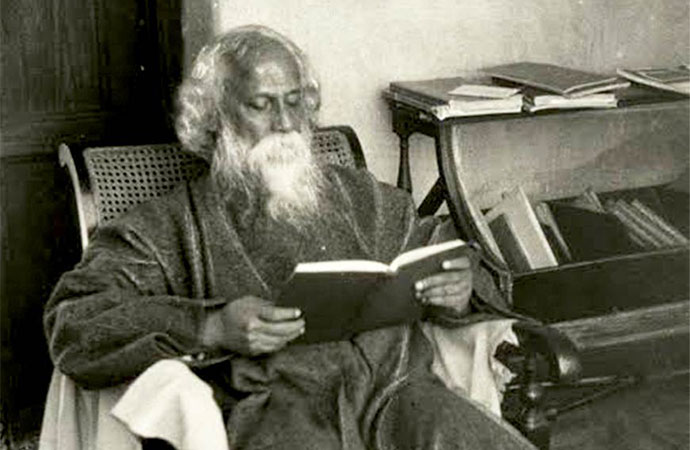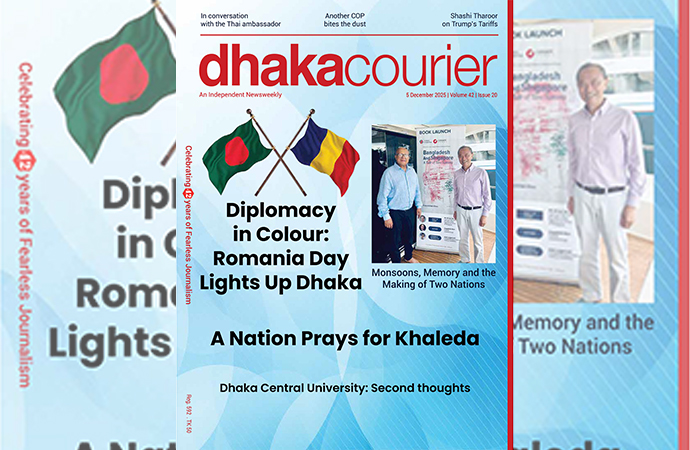Column

No one remains the same after having read Jasimuddin's Nakshi Kanthar Math (The Field of Embroidered Quilt). That is because, as observers point out, the ballad, published in 1929, locates the cardinal virtue of poetry in its ability to embody the extreme beauty of simplicity. In the process, poetry transforms the rude transience of everyday life into the elegant permanence of art.
William Wordsworth said that poetic style should reflect the language really used by humble and rustic people. Jasimuddin does just that in his long poems. He speaks of the two lovers Ruapai and Saju who transcend, as I have written in my book, Sohag Chand: Homage to Bengal, "the warring distance between their two villages, which are separated by a vast expanse of agricultural land but which are bordered by a freshwater lake. When a heartbroken song rises to the skies in one village, a young woman in the other village catches its cry through the gaps in the wooden fence of her home. The winds flowing through one village shake the rafts going to the other. The tragic ending of Nakshi Kanthar Math weaves the tale of the two lovers into the tapestry of Bengal, one of whose supreme folk achievements is the nakshi kantha, the embroidered quilt. Jasimuddin's Sojan Badiar Ghat (Sojan Gypsy's Wharf), published in 1933, similarly situates the quintessential Bengali habitus in folk poetry "that draws on the redemptive tapestry of elemental rurality in an anguished rejection of the invasive forces of nature, fate, and man". Polli kobi - folk poet - Jasimuddin wove rural Bengal into the nakshi kantha of eternity.
Eternity is nothing if it does not exist in the present. I was happy, therefore, to come across the website of an enterprise in West Bengal devoted to promoting the kantha as an art form that has material use as well. The online enterprise, called Villgoods, is located in Birbhum and is run by a 36-year-old entrepreneur called Rebeka Mondal, who has a Masters in Mathematics. As I gathered from her in a brief conversation, art has to become a commodity if it has to survive on the market, but art has to create that market as well. What Villgoods does is to make the market art-worthy. The point is to have a market where consumers possess taste, taste being the quality of discrimination in some humans that distinguishes them from animals and lower human beings.
A kantha displayed on the website shows a beseeching child kneeling near his mother. I messaged Rebeka asking for information on what it meant. Rebeka forwarded me a reply in Bengali: "The picture shows a prodigal son kneeling in front of his mother, his head bowed, pleading in regret for something he did. The mother is not angry: What shows through in her look is both her everyday tiredness and her endless love, a power that only mothers possess. Every stich on this quilt weaves into one whole the earthy identity of a rural home, the known shade of a flowering tree and the unconditional lovingness of mother-son relationships, particularly when the prodigal son returns. The mother is not a source of reliability: She is reliability itself. Her anchol over her head, she represents the human capacity for dependability, a maternal promise surrounded by natural sources of human resilience such as the kadam phul tree. To return to one's mother is to return to being loved and valued for what one is, not for what one becomes or fails to become. Instinctive recognition ties the mother to her child."
I compliment Rebeka and Villgoods for having brought the weavers of Birbhum together in an economic and cultural enterprise that keeps the kantha alive in West Bengal and other parts of India. Bangladesh, to mention the obvious, does that as well. I came across the website of Khushi Kantha, which promotes handmade textiles that are stitched from reclaimed and ethically-sourced cotton by mothers in Bangladesh. There are many more enterprises that keep the kantha alive as a concrete symbol of the maternal provenance of Bengal as a choice destination in which to be born.
That is what the poetry of Jasimuddin and Jibanananda does as well, to say nothing of Tagore and Nazrul. The kantha embodies the protective agency of a Bengal where maternity is considered to be the happiest epitome of femininity. To say this is not to demean non-Bengali mothers (or those who choose to be not mothers) but to celebrate the mothers of Bengal from whose womb this great nation has sprung over loveless masculine centuries. It is in Bengal that infants can lie on a torn kantha and ask their mothers to grab the moon from the skies for them. The mothers smile at their babies, whereupon those mini-Bengalis forget about the moon and reach out for their mothers with their tiny arms. As a poor mother picks up her child from the kantha, the moon is jealous. It is beautiful beyond human measure, but it is not a mother and can never be. The human mother wins after all.
The skies of Bengal are precious, but the land beneath is intimate even more. May the kantha, the product of human hands which represent the earth, always protect newborns. They may grow up to be prodigal, but they will return penitent one day because there is no mother quite like Bengal.
The writer is Principal Research Fellow of the Cosmos Foundation. He may be reached at epaaropaar@gmail.com

























Leave a Comment
Recent Posts
Right On Schedule
The most eagerly anticipated, and frankly hyped up, announcement of an ...
Fighting raged along the borde ...
Fighting raged along the border of Cambodia and Thailand, with explosi ...
ICIMOD drives regional cooperation to inspire new mo ..
The Cage of Captivity and the Cry for Freedom: A Cru ..
Why Japan issued an advisory for a possible megaquak ..
The Autocrats’ War on Universities